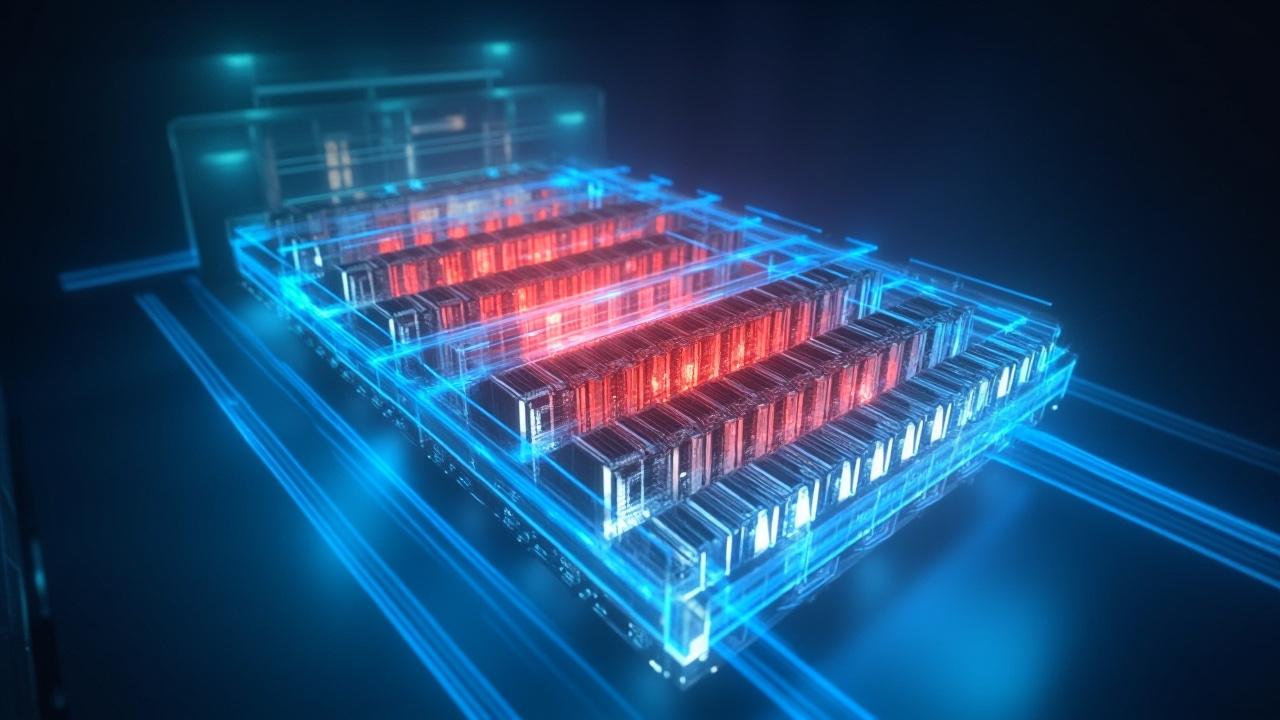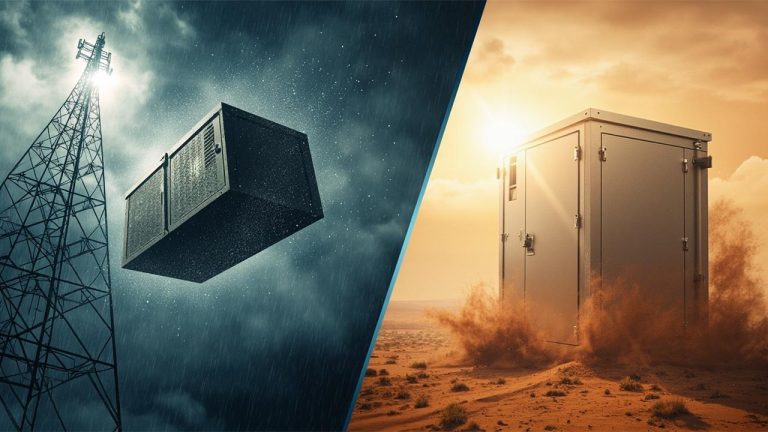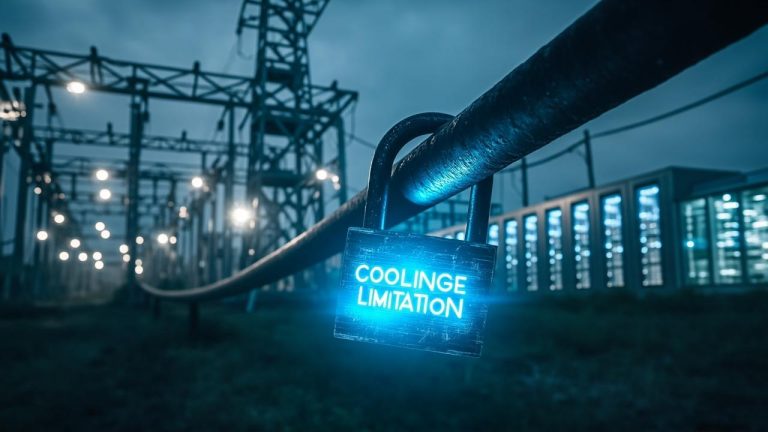Introduction
Imagine a data center, the backbone of a global finance firm, grinding to a halt. Servers shut down, transactions fail, and the company bleeds money – all because of a single, undetected hotspot. This scenario, while fictional, is a stark reality for businesses that underestimate the devastating impact of heat on their operations. Overheating is a silent killer, lurking within complex systems, ready to trigger unexpected downtime, damage equipment, and jeopardize safety.
The link between rising temperatures and operational failure is undeniable. As components overheat, their performance degrades, leading to errors, slowdowns, and eventually, complete shutdowns. This domino effect can cripple entire systems, causing significant financial losses and reputational damage. The key to avoiding these catastrophes lies in shifting from reactive firefighting to proactive heat management. Businesses need to move beyond simply responding to overheating incidents and embrace strategies that predict and prevent them.
Predicting and preventing hotspots is paramount. That’s where thermal modeling comes in. It is essential for maintaining operational efficiency and avoiding expensive disruptions. By proactively identifying potential problem areas, organizations can implement targeted cooling solutions, optimize system configurations, and ensure uninterrupted performance. The goal is to stay one step ahead of the heat, safeguarding critical infrastructure and minimizing the risk of costly downtime.
Understanding the Anatomy of a Hotspot
A hotspot, in the context of electronic equipment and industrial processes, is defined as a localized area where the temperature significantly exceeds the safe or designed operating limits of the surrounding environment or components. This isn’t just a matter of being a little warm; a hotspot indicates a concentrated area of excessive heat, potentially leading to malfunctions, failures, or even hazardous conditions.
Think of a server in a data center operating at 95°C when its maximum safe operating temperature is 85°C – that server is experiencing a hotspot. The severity of a hotspot can range from a minor inconvenience to a catastrophic event, depending on the magnitude of the temperature deviation and the sensitivity of the affected components.
Hotspots tend to congregate in specific locations depending on the type of equipment and the environment. In data centers and server rooms, common hotspot locations include CPUs, GPUs, power supplies, and densely packed areas with poor airflow. Industrial machinery often experiences hotspots in motors, bearings, and areas with high friction or electrical resistance.
Within power distribution units (PDUs), transformers, circuit breakers, and connection points are prime candidates. These areas share a common thread: they are locations where significant amounts of energy are converted or concentrated, making them inherently prone to heat generation. Identifying these common locations is the first step in a comprehensive heat management strategy.
The root causes of hotspot formation are varied, but often stem from a combination of factors. Insufficient cooling is a primary culprit. This can be due to inadequate HVAC capacity, blocked vents, or inefficient cooling system design. Component aging and eventual failure also contribute to hotspot development, as components lose efficiency and generate more heat as they degrade.
Overclocking or overloading systems beyond their designed capacity pushes components beyond their safe operating parameters, leading to excessive heat generation. Poor ventilation prevents the efficient removal of heat, causing it to accumulate in localized areas. Finally, the accumulation of dust and debris acts as an insulator, trapping heat and further exacerbating the problem. Predicting and understanding how these factors interplay requires sophisticated approaches like *thermal modeling* and analysis.
| Hotspot Factor | Description |
|---|---|
| Insufficient Cooling | Inadequate HVAC capacity or blocked vents |
| Component Aging | Degraded components generate more heat |
| Overclocking/Overloading | Exceeding designed operating limits |
| Poor Ventilation | Inefficient heat removal |
| Dust Accumulation | Insulation effect trapping heat |
The High Cost of Ignoring Hotspots
The consequences of neglecting potential hotspots extend far beyond mere inconvenience. Downtime, the most immediate and obvious impact, is merely the tip of the iceberg when considering the true cost of overheating. The financial repercussions can be staggering, and the risks to equipment, safety, and reputation are equally significant.
The Price Tag of Lost Time
Downtime translates directly into lost productivity and revenue. Imagine a manufacturing plant brought to a standstill due to a malfunctioning control system fried by excessive heat. Every hour of inactivity represents lost production capacity, missed deadlines, and potential penalties.
Similarly, a server outage in a data center can cripple business operations, disrupting customer service, online transactions, and internal communications. The cost of this lost time can easily run into tens of thousands, or even millions, of dollars depending on the size and nature of the operation. Repair costs also mount quickly, with emergency service fees and expedited parts adding to the financial burden.
Equipment Degradation and Safety Hazards
Prolonged exposure to elevated temperatures accelerates the degradation of electronic components and mechanical systems. Overheating can cause premature failure of critical parts, leading to unexpected breakdowns and costly replacements. Sensitive electronic components are particularly vulnerable, and their lifespan can be significantly shortened by even brief periods of overheating.
Furthermore, uncontrolled heat poses a serious safety risk. Overheated electrical equipment can spark fires, endangering personnel and causing extensive property damage. Ignoring hotspots is not just bad for business, it’s a potential liability issue with significant risks.
Reputational Repercussions
Service interruptions resulting from overheating can severely damage a company’s reputation. In today’s interconnected world, customers expect seamless and reliable service. A single outage can trigger a wave of negative reviews, social media backlash, and lost customer trust.
Recovering from such reputational damage can be a long and arduous process. Companies invest heavily in building a positive brand image, and a preventable service interruption can quickly undo years of hard work. Predictive maintenance strategies such as thermal modeling can help mitigate these risks.
Proactive Detection
Early detection of potential hotspots is paramount to preventing costly downtime and equipment failure. A multi-faceted approach, combining various detection methods, provides the most robust defense. These methods range from advanced technological solutions to simple, yet effective, visual inspections. The key is to establish a routine and implement a system that allows for consistent monitoring and analysis.
One of the most effective methods is infrared thermography, also known as thermal imaging. This technique uses specialized cameras to detect and visualize temperature variations on surfaces. Hotspots appear as areas of elevated temperature, often highlighted with contrasting colors on the thermal image.
Trained technicians can use these images to quickly identify problematic areas within electrical panels, machinery, or even entire server rooms. This allows for targeted interventions before the situation escalates. Regular use of thermal imaging equipment can help to spot issues early before temperatures reach critical levels.

Another valuable tool is the implementation of temperature sensors and monitoring systems. These systems continuously track temperatures at critical points within your infrastructure and provide real-time data. Programmable alerts can be configured to trigger notifications when temperatures exceed predefined thresholds, allowing for immediate investigation and corrective action. More basic forms of detection can be achieved with visual inspections.
Trained personnel can identify signs of overheating, such as discoloration, bulging capacitors, or the smell of burning components. While less precise than thermal imaging or sensor-based monitoring, visual inspections can be a cost-effective way to identify obvious issues. Finally, analyzing the performance metrics of key components can also provide clues about potential hotspots. For example, unusually high CPU or GPU utilization might indicate that a component is working harder than it should, generating excessive heat.
| Detection Method | Description | Benefits |
|---|---|---|
| Infrared Thermography | Uses thermal imaging cameras to visualize temperature variations. | Quickly identifies hotspots, non-invasive. |
| Temperature Sensors | Continuously monitors temperatures at critical points. | Real-time data, programmable alerts. |
| Visual Inspections | Regular checks for signs of overheating. | Cost-effective, identifies obvious issues. |
Leveraging Thermal Modeling for Predictive Analysis
Thermal modeling offers a powerful approach to preemptively address potential overheating issues within complex systems. By creating a virtual representation of a physical environment, engineers and technicians can simulate heat transfer and identify areas prone to developing hotspots long before they manifest in the real world.
This proactive methodology allows for informed decision-making regarding cooling strategies and system optimization, minimizing the risk of unexpected downtime and equipment failure. This detailed analysis can be achieved using a variety of software options.
The benefits of employing thermal modeling are multifaceted. It allows for virtual experimentation with different cooling solutions and configurations. For example, before investing in a new HVAC system for a server room, a company can use thermal modeling to simulate the impact of various system sizes and airflow patterns.
This minimizes the risk of investing in a solution that is either inadequate or excessively expensive. Further, it enables the exploration of strategies like hot aisle/cold aisle containment, optimizing the placement of cooling units and evaluating the effectiveness of different thermal interface materials (TIMs) without the need for physical prototypes or disruptive real-world testing. The process of thermal simulation is able to identify the optimal solution.
Various software packages and services cater to diverse industry needs when it comes to thermal analysis. Here are a few examples:
- ANSYS Icepak: Widely used in the electronics industry for simulating airflow and heat transfer in electronic components and systems.
- FloTHERM: Another popular choice for electronics cooling, offering robust capabilities for modeling complex geometries and thermal interactions.
- COMSOL Multiphysics: A general-purpose simulation software that can be used for thermal analysis in a wide range of applications, including building design, manufacturing, and automotive engineering.
- 6SigmaET: Specializes in data center thermal management, providing tools for modeling and optimizing cooling infrastructure.
The use of robust software options allows facilities managers to make informed decisions to prevent costly and catastrophic failures.
Implementing Effective Cooling Solutions
Optimizing Airflow and Ventilation
One of the most fundamental, yet often overlooked, cooling strategies is optimizing airflow and ventilation. Stagnant air traps heat, creating localized hotspots. A well-designed airflow system ensures that cool air reaches critical components while simultaneously removing hot air. This can involve strategically positioning equipment, ensuring adequate spacing between devices, and clearing any obstructions that might impede airflow.
In server rooms, for example, cable management is crucial; tangled cables can act as insulators, preventing heat from dissipating effectively. Furthermore, ensuring proper ventilation, whether through natural means or forced air systems, is paramount. This prevents the buildup of hot air within the enclosed space, contributing to a more stable and cooler environment.
Cooling System Upgrades and Selection
When airflow optimization isn’t enough, more robust cooling solutions are necessary. The type of system deployed should be tailored to the specific needs of the environment and the heat load generated. Options range from traditional HVAC systems to more advanced technologies like liquid cooling and direct-to-chip cooling. HVAC systems are suitable for general climate control, providing consistent cooling across a broader area.
However, for high-density environments such as data centers, liquid cooling offers superior heat removal capabilities by circulating a coolant directly to the heat-generating components. Direct-to-chip cooling takes this a step further, integrating cooling directly into the chip packaging for even greater efficiency. The selection process should involve careful consideration of factors like power consumption, cooling capacity, space constraints, and the specific thermal requirements of the equipment being cooled.
The Role of Thermal Interface Materials (TIMs) and Heat Sinks
Even with optimal airflow and sophisticated cooling systems, efficient heat transfer at the component level is crucial. This is where thermal interface materials (TIMs) and heat sinks come into play. TIMs, such as thermal paste or pads, fill the microscopic air gaps between a heat-generating component and its heat sink, improving thermal conductivity and facilitating heat transfer. Selecting the appropriate TIM is critical; different materials offer varying levels of thermal conductivity and are suitable for different applications.
Heat sinks, typically made of aluminum or copper, increase the surface area available for heat dissipation, allowing heat to be transferred more efficiently to the surrounding air or coolant. The size and design of the heat sink should be carefully matched to the thermal load of the component to ensure adequate cooling. It’s worth looking into thermal modeling when choosing these components to make sure that they are the right fit for your unique situation.
Maintenance and Monitoring
Consistent maintenance is essential for the long-term effectiveness of any cooling solution. Just as a car requires regular servicing to perform optimally, cooling systems need periodic attention to ensure they continue to dissipate heat efficiently. Neglecting maintenance can lead to a gradual decline in performance, increasing the risk of hotspots and eventual equipment failure.

Develop a comprehensive maintenance schedule that includes tasks such as cleaning air filters, inspecting fans for proper operation, and checking for refrigerant leaks in air conditioning systems. This proactive approach will not only extend the lifespan of your cooling infrastructure but also help to identify potential problems before they escalate into major issues.
In addition to scheduled maintenance, continuous temperature monitoring is crucial for maintaining a stable operating environment. Implement a system that tracks temperature data in real-time and provides alerts when thresholds are exceeded. This allows for immediate intervention when temperatures start to rise unexpectedly, preventing potential damage and downtime.
These monitoring systems can range from simple temperature sensors strategically placed throughout the environment to sophisticated software solutions that analyze temperature trends and predict potential hotspots. Regardless of the specific technology used, the goal is to maintain constant awareness of the thermal conditions within your facility.
Keeping detailed records of temperature data and maintenance activities is another critical component of effective hotspot management. This historical information can be invaluable for identifying patterns, predicting future problems, and optimizing cooling strategies. For example, analyzing temperature trends over time might reveal that certain equipment consistently runs hotter during peak hours, indicating a need for additional cooling capacity.
Similarly, tracking maintenance activities can help to identify recurring issues with specific equipment or cooling systems, allowing for more targeted interventions. Using the data gathered can provide valuable feedback for future decisions involving thermal modeling or changes in infrastructure.
Case Studies
One prominent example involves a large data center that was experiencing frequent server failures. They had been reactive, replacing failed components only after they crashed, leading to significant downtime and customer dissatisfaction. After implementing a comprehensive hotspot prevention strategy, including regular infrared thermography scans, they identified several racks with inadequate cooling. Technicians discovered that obstructed airflow due to improper cable management and dust accumulation was significantly hindering the effectiveness of the existing cooling systems.
The data center took immediate action by:
Another compelling case comes from a manufacturing plant that relies heavily on robotic arms for its production line. The control cabinets housing the electronics for these robots were prone to overheating, especially during peak production periods in the summer months. The high temperatures caused intermittent robot malfunctions, leading to production delays and scrapped products.
The plant invested in a real-time temperature monitoring system with sensors placed inside the control cabinets. This system provided immediate alerts when temperatures exceeded predefined thresholds.
When an alert was triggered, maintenance personnel were dispatched to investigate and take corrective action. In several instances, the monitoring system identified failing cooling fans within the cabinets before they completely failed, allowing for proactive replacement and preventing downtime. Furthermore, they used the data collected to identify cabinets that consistently ran hotter than others.
This led them to discover that the placement of these cabinets near heat-generating machinery was the root cause. Relocating the cabinets to a cooler area of the plant significantly reduced the operating temperatures and eliminated the robot malfunctions.
Conclusion
In summary, proactively managing hotspots transcends mere cost-saving measures; it’s about ensuring business continuity, safeguarding valuable assets, and upholding a reputation for reliability. The ability to foresee potential thermal issues and implement targeted cooling solutions represents a strategic advantage in today’s demanding operational landscape. By embracing a proactive approach, organizations can transform a potential liability into a competitive strength.
The journey towards effective hotspot management begins with awareness and assessment. It necessitates a comprehensive understanding of potential heat sources, existing cooling infrastructure, and the specific needs of the operational environment.
From routine inspections to leveraging advanced techniques like infrared thermography, or the use of temperature sensors for constant monitoring, a multi-faceted approach offers the most robust defense against unexpected downtime. Furthermore, don’t underestimate the power of simulations; thermal modeling offers the ability to foresee challenges and mitigate them before they manifest in the real world.
Ultimately, the choice is clear: invest in proactive heat management or risk facing the consequences of preventable downtime. We urge you to critically evaluate your current practices and identify areas for improvement.
Whether it involves consulting with a cooling specialist, implementing a real-time temperature monitoring system, or exploring the benefits of thermal imaging, taking action today is an investment in a cooler, more reliable, and ultimately more successful tomorrow. Don’t wait for the heat to rise; take control and stay operational.
Frequently Asked Questions
What is thermal modeling and what is its primary purpose?
Thermal modeling is the process of creating a mathematical representation of a physical system to predict its thermal behavior. Its primary purpose is to understand and analyze how heat is generated, transferred, and dissipated within the system, allowing engineers to predict temperatures and identify potential thermal issues before they arise. This understanding enables informed design decisions and proactive problem-solving.
What are the different types of thermal modeling techniques?
Various thermal modeling techniques exist, each suited for different scenarios and levels of detail. These include lumped element modeling, which simplifies the system into discrete components, and finite element analysis (FEA), which divides the system into smaller elements to solve complex heat transfer equations.
Computational Fluid Dynamics (CFD) is another technique used to simulate fluid flow and heat transfer interactions. Each technique balances accuracy and computational cost.
What software is commonly used for thermal modeling?
Several software packages are widely used for thermal modeling across different industries. ANSYS Icepak and ANSYS Mechanical are popular for FEA and electronics cooling simulations. COMSOL Multiphysics offers a versatile platform for simulating various physical phenomena, including heat transfer.
FloTHERM is also widely used for electronics thermal management. These tools provide capabilities for creating models, defining boundary conditions, and visualizing results.
What input data is required for accurate thermal modeling?
Accurate thermal modeling requires comprehensive input data that describes the physical system and its environment. This includes the geometry of the components, material properties such as thermal conductivity and specific heat capacity, and power dissipation values for heat-generating components. Ambient temperature, airflow rates, and boundary conditions such as heat sinks are also vital for realistic simulations.
How does thermal modeling help in designing and optimizing electronic devices?
Thermal modeling plays a crucial role in designing and optimizing electronic devices by enabling engineers to predict operating temperatures and identify potential hotspots. By understanding the thermal behavior, engineers can optimize heat sink designs, component placement, and airflow management to prevent overheating and ensure reliable performance. This leads to more efficient, durable, and cost-effective electronic devices.




